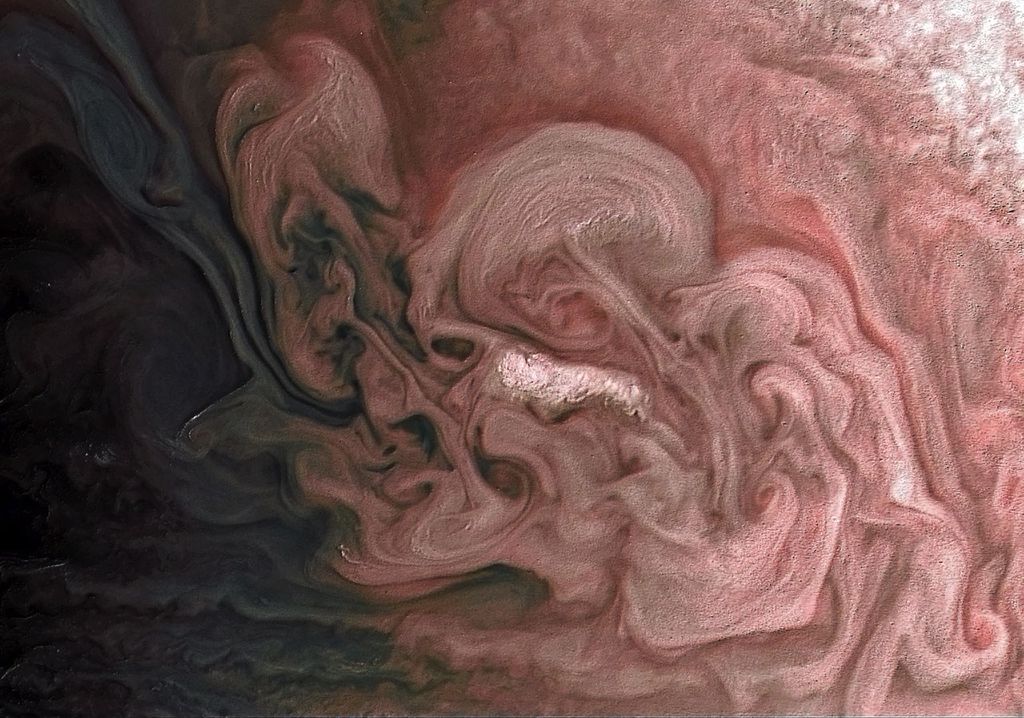1 min read
Dark Matter Map in Galaxy Cluster Abell 1689

This is the Hubble Space Telescope image of the inner region of Abell 1689, an immense cluster of galaxies located 2.2 billion light-years away. Dark matter in the cluster is mapped by plotting the plethora of arcs produced by the light from background galaxies that is warped by the foreground cluster's gravitational field. Dark matter cannot be photographed, but its distribution is shown in the blue overlay. The dark matter concentration and distribution is then used to better understand the nature of dark energy, a pressure that is accelerating the expansion of the universe. The imaging data used in the natural-color photo was taken in 2002 with Hubble's Advanced Camera for Surveys.
About the Object
- R.A. PositionR.A. PositionRight ascension – analogous to longitude – is one component of an object's position.13h 11m 29.5s
- Dec. PositionDec. PositionDeclination – analogous to latitude – is one component of an object's position.-1° 20' 17.01"
- ConstellationConstellationOne of 88 recognized regions of the celestial sphere in which the object appears.Virgo
- DistanceDistanceThe physical distance from Earth to the astronomical object. Distances within our solar system are usually measured in Astronomical Units (AU). Distances between stars are usually measured in light-years. Interstellar distances can also be measured in parsecs.The distance to the lensing cluster is 2.2 billion light-years (675 megaparsecs). The distance to the lensed galaxy is about 12.8 billion light-years.
About the Data
- Data DescriptionData DescriptionProposal: A description of the observations, their scientific justification, and the links to the data available in the science archive.
Science Team: The astronomers who planned the observations and analyzed the data. "PI" refers to the Principal Investigator.ACS/WFC data of Abell 1689 were observed with the HST proposal 9289: H. Ford and N. Benitez (Johns Hopkins University), and T. Broadhurst (Tel Aviv University). The science team for this release includes: E. Jullo (Jet Propulsion Laboratory), P. Natarajan (Yale University), J.-P. Kneib (Laboratoire d'Astrophysique de Marseille, CNRS, France), A. D'Aloisio (Yale University), M. Limousin (Laboratoire d'Astrophysique de Marseille and University of Copenhagen, Denmark), J. Richard (Durham University, U.K.), and C. Schimd (Laboratoire d'Astrophysique de Marseille, CNRS, France). - InstrumentInstrumentThe science instrument used to produce the data.HST>ACS/WFC
- Exposure DatesExposure DatesThe date(s) that the telescope made its observations and the total exposure time.June 12-21, 2002, Exposure Time: 10.5 hours
- FiltersFiltersThe camera filters that were used in the science observations.F475W (g) F775W (i) F850LP (z)
- Object NameObject NameA name or catalog number that astronomers use to identify an astronomical object.Abell 1689
- Object DescriptionObject DescriptionThe type of astronomical object.Galaxy Cluster
- Release DateAugust 19, 2010
- Science ReleaseFirst Use of Cosmic Lens to Probe Dark Energy
- Credit

Color Info
Color InfoA brief description of the methods used to convert telescope data into the color image being presented.
This image is a composite of separate exposures acquired by the ACS instrument on the Hubble Space Telescope (HST). Several filters were used to sample broad wavelength ranges. The color results from assigning different hues (colors) to each monochromatic (grayscale) image associated with an individual filter. In this case, the assigned colors are: Blue: Dark Matter Map + F475W (g) Green: F775W (i) Red: F850LP (z)

Compass and Scale
Compass and ScaleAn astronomical image with a scale that shows how large an object is on the sky, a compass that shows how the object is oriented on the sky, and the filters with which the image was made.
Share
Details
Last Updated
Aug 17, 2025
Contact
Media
Claire Andreoli
NASA’s Goddard Space Flight Center
Greenbelt, Maryland
claire.andreoli@nasa.gov































